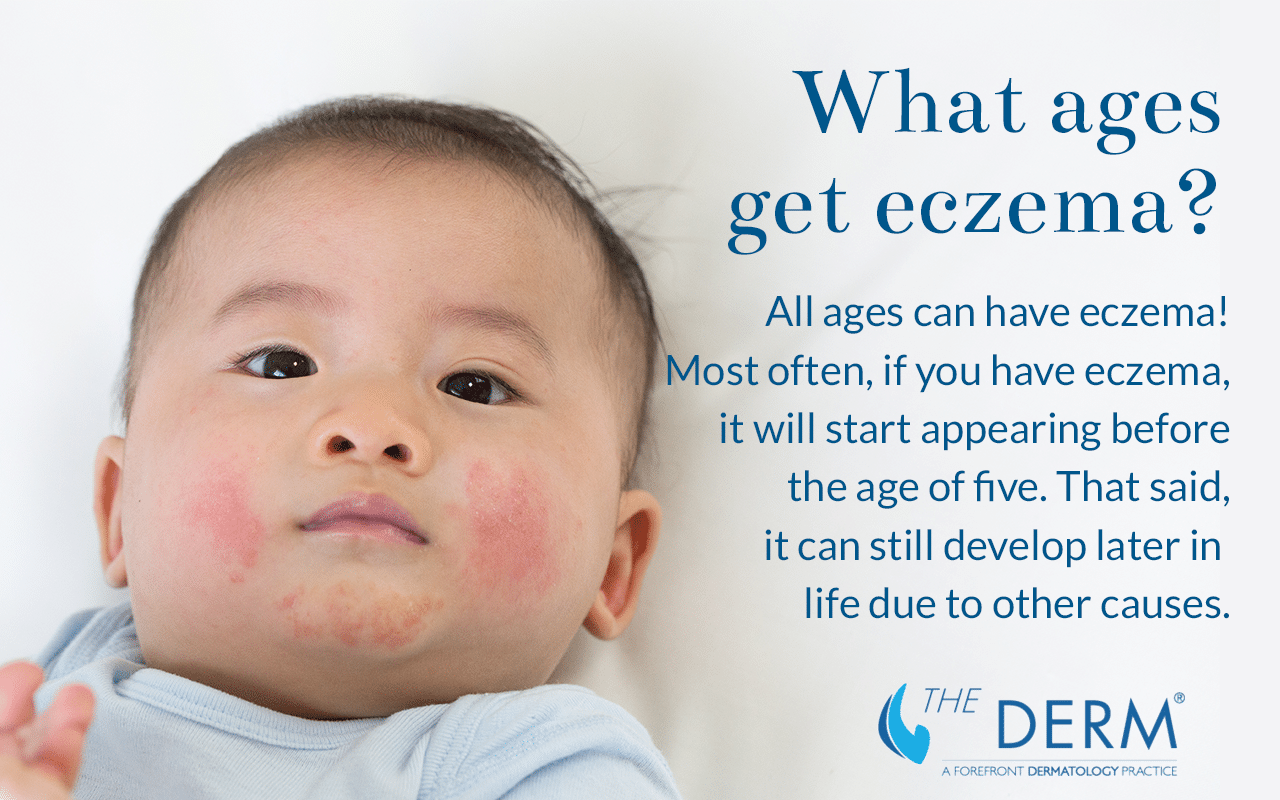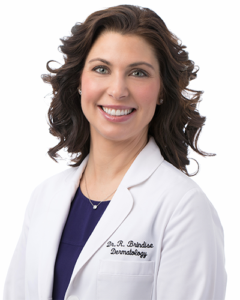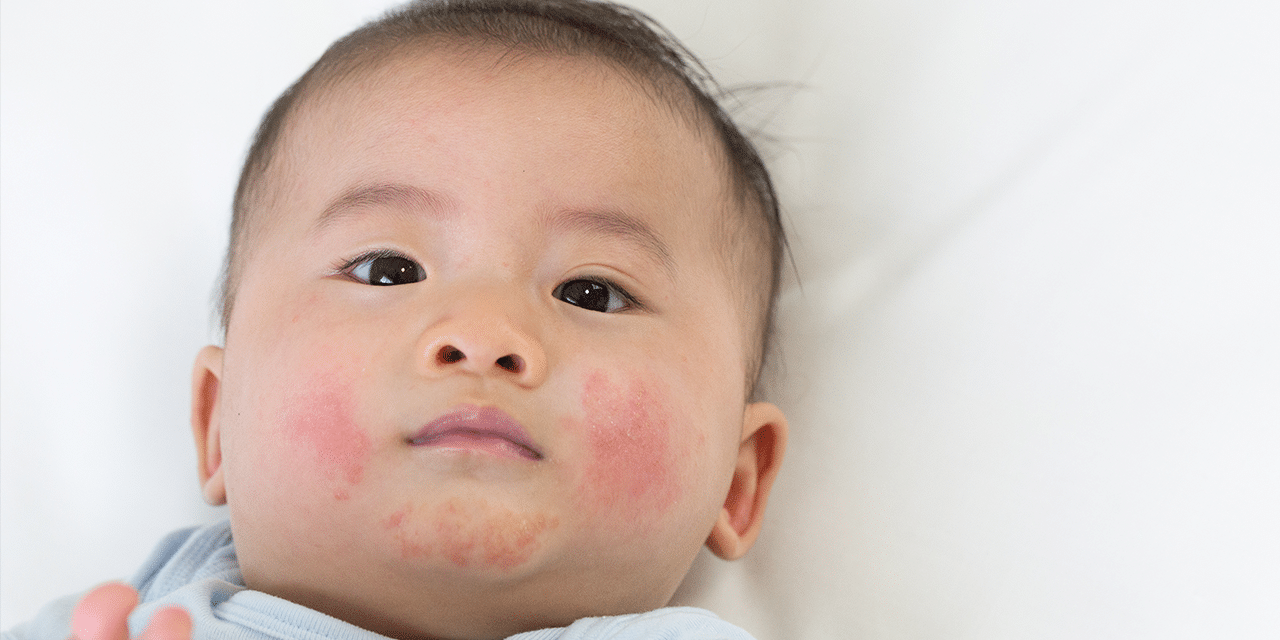Skin conditions that are uncomfortable but not necessarily dangerous can be tough to deal with. Some people choose to just put up with them, some may not even realize their skin’s problems are a real condition at all, and others take action and see a dermatologist.
A skin condition that fits this is eczema. Eczema impacts more than 15 million Americans, including 10-20% of newborn infants, and about 10% of children as well.
Here to guide us through what eczema is and treatment options is Dr. Renata Brindise.
What is eczema?
Eczema is a term that describes itchy and inflamed skin that’s often accompanied by a red or scaly patch of skin. Atopic Dermatitis is the most common form of eczema.
What does it look like?
While this may vary slightly from person-to-person, most eczema appears on the skin in red, flaky patches in varying areas. When more severe it can even appear to blister or ooze.
Most commonly, eczema can be found in areas of the skin that bend frequently, including inner elbows, backs of knees, hands, and even the face and scalp in kids. However, it can affect any area of skin.
What causes eczema?
Eczema is a genetically driven condition that is made worse by immune system responses, environmental triggers, irritants and allergens, and even stress.
You may find that certain activities or exposures trigger your eczema, like prolonged time in water, excessive time in the sun, extremely dry weather or others.
What ages can have eczema?
All ages can have eczema! Most often, if you have eczema, it will start appearing before the age of five. The good news is that most children will grow out of it before adulthood. That said, it can develop later in life due to causes listed above.

What’s the difference between eczema and psoriasis?
It can be hard to tell the difference between eczema and psoriasis unless you’re a trained dermatologist.
Eczema can often be very itchy, to the point that you may feel like you need to break skin in order to satisfy the itch.
Psoriasis can also itch, though not as severely. The rash of psoriasis will oftentimes appear thicker looking than in eczema.
Psoriasis is also found in other areas of the body, commonly on the trunk of the body, though psoriasis can appear on the face, scalp, extremities and buttocks.
Ultimately, only a dermatologist can help you be certain of which it is.
How do you treat eczema?
There are a number of home remedies you can try in order to treat eczema.
Popular at-home treatments include:
- Taking lukewarm (not hot) baths and showers
- Avoiding harsh soaps, cleansers, and detergents
- Applying unscented moisturizer right after being in water
- Using a humidifier to keep moisture in the air
- Keeping track of eczema triggers and avoiding them
- Wearing soft fabrics that won’t rub the skin
In most cases, a dermatologist can help treat eczema with treatments you can’t get at home. However, utilizing at-home remedies along with dermatologist treatments can maximize results.
Here are potential eczema treatments from a dermatologist:
- Topical steroid creams
- Non-steroidal anti-inflammatory creams
- Antihistamines
- Oral medications
- Antibiotics
- Phototherapy
Ultimately, seeing a dermatologist is the best way for you to learn where your eczema stems from and how to treat it in a way that will allow you to get back to living your best life!
Click here to schedule an appointment to get help today!
Is it really important to wear sunscreen?
Yes. You should wear it every day as part of your daily routine.
Sunscreen blocks skin cancer. In fact, 90% of skin cancers are preventable with sunscreen.
What SPF should I use?
The American Academy of Dermatology (AAD) suggests an SPF of 30 and above. That gives us a range so that if we only put on say, half of what we’re supposed to, we’re still getting an SPF of 15.
How much sunscreen should I use, and when should I re-apply?
You want to put about 1 oz of sunscreen on your face, and for your whole body at least 2 oz. Each ounce is about the size of an egg.
You should re-apply every 2 hours, but most people don’t.

Dr. Brindise’s passion is to help her patients achieve lifelong healthy and beautiful skin. She enjoys spending time collaborating with her patients on how their skin and visual appearance help define them as an individual. She thrives on educating her patients about their skin conditions and the importance of preventative skin care. She prides herself on providing each patient with compassionate and individualized care in all aspects of medical, surgical, and cosmetic dermatology. Dermatology has provided her the greatest opportunity to combine her passion for visual analysis and acuity with her enjoyment of challenging problem solving.
Dr. Brindise began her study at the University of Illinois at Urbana-Champaign, completing a degree in Molecular and Cellular Biology. She earned her doctorate at the Chicago College of Osteopathic Medicine, where she graduated at the top of her class and served as president of the American Medical Women’s Association. She completed her residency in dermatology through Michigan State University at Oakwood Southshore Medical Center in Trenton, Michigan. She distinguished herself during residency and was selected to supervise and coordinate all cosmetic training and education.







